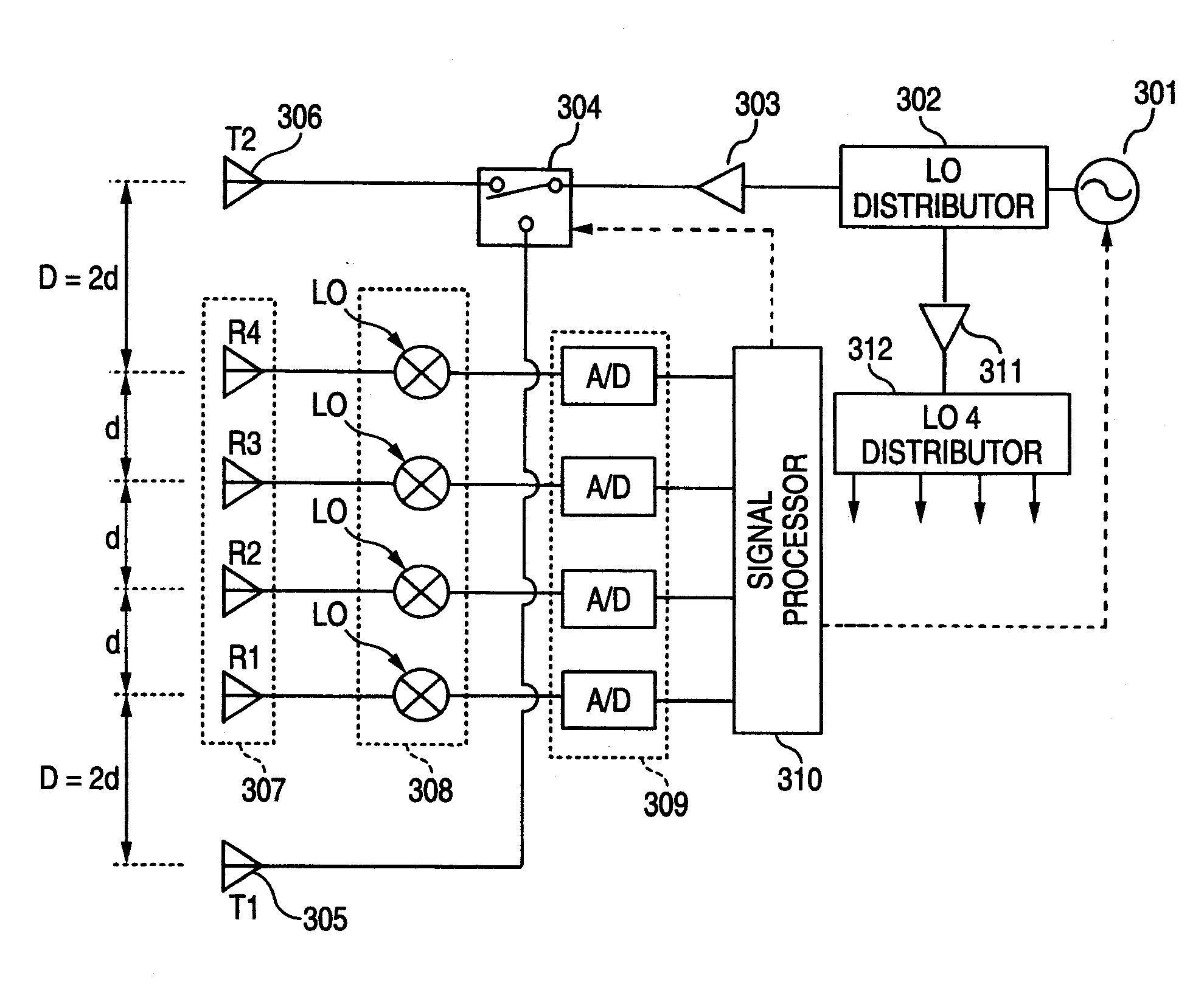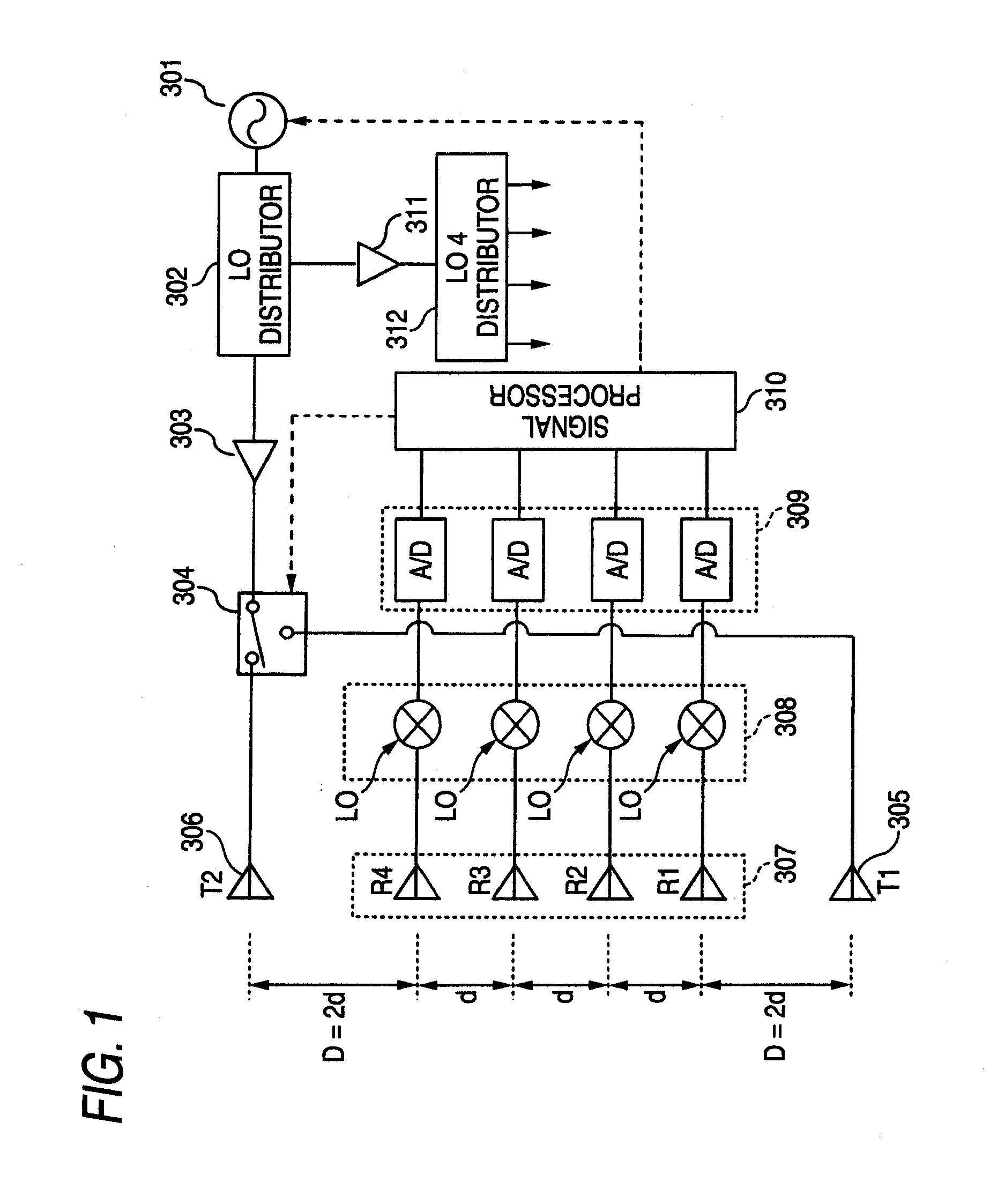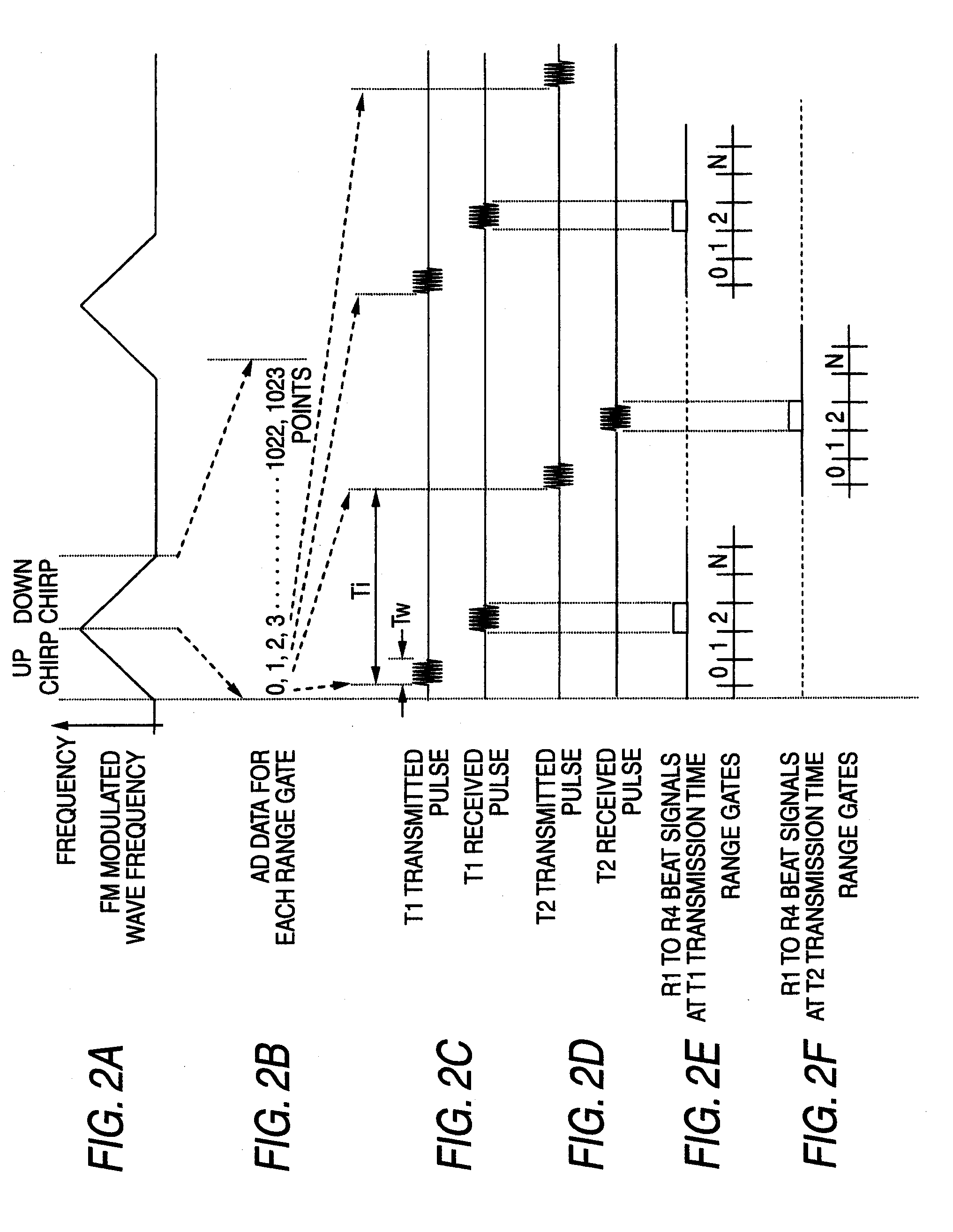Radar apparatus
a technology of radar and apparatus, applied in direction finders, multi-channel direction-finding systems using radio waves, instruments, etc., can solve the problems of increasing the calculation amount, limiting the angular resolution, and unable to apply fft, so as to increase the aperture diameter, reduce the calculation amount, and enhance the angular resolution
- Summary
- Abstract
- Description
- Claims
- Application Information
AI Technical Summary
Benefits of technology
Problems solved by technology
Method used
Image
Examples
first embodiment
[0034]A description will be given of a first embodiment corresponding to the first aspect of the invention. FIG. 1 showing a radar apparatus according to the first embodiment, the radar apparatus includes a first transmitting antenna 305 (T1) and a second transmitting antenna 306 (T2), switched between by a transmitting switch 304. Receiving antennas 307, configured of a plurality (in the embodiment, four) of receiving antennas R1, R2, R3 and R4, are disposed between the first and second transmitting antennas 305 and 306 (T1 and T2). The receiving antennas R1 to R4 are disposed at regular spacings d. The transmitting antennas 305 (T1) and 306 (T2), positioned on either side of the receiving antennas R1 to R4, are spaced a spacing D=2d away from the respective adjacent receiving antennas R1 and R4 positioned on either end of the receiving antennas 307.
[0035]A connection is made in such a way that a signal generated by a voltage control oscillator (hereafter abbreviated as a VCO) 301 ...
second embodiment
[0063]A description will be given of a second embodiment corresponding to the second and third aspects of the invention. A configuration of a radar apparatus of the embodiment is the same as that of FIG. 1. Hereafter, a description will be given only of points differing from those of the first embodiment.
[0064]In any of the cases of the heretofore described beamformer method, which searches for the direction in which the received power of the antenna beam reaches its maximum after the DBF, monopulse method (using the amplitude or the phase), and super resolution method, which are the methods for the angle calculation, it is desirable that amplitude and phase characteristics of the plurality of receiving antennas are as uniform as possible. This is because, in the event that the amplitude characteristics of the receiving antennas differ from one another, a distortion occurs in the synthesis antenna pattern after the DBF and, in the beamformer method which searches for the direction i...
PUM
 Login to View More
Login to View More Abstract
Description
Claims
Application Information
 Login to View More
Login to View More - R&D
- Intellectual Property
- Life Sciences
- Materials
- Tech Scout
- Unparalleled Data Quality
- Higher Quality Content
- 60% Fewer Hallucinations
Browse by: Latest US Patents, China's latest patents, Technical Efficacy Thesaurus, Application Domain, Technology Topic, Popular Technical Reports.
© 2025 PatSnap. All rights reserved.Legal|Privacy policy|Modern Slavery Act Transparency Statement|Sitemap|About US| Contact US: help@patsnap.com



